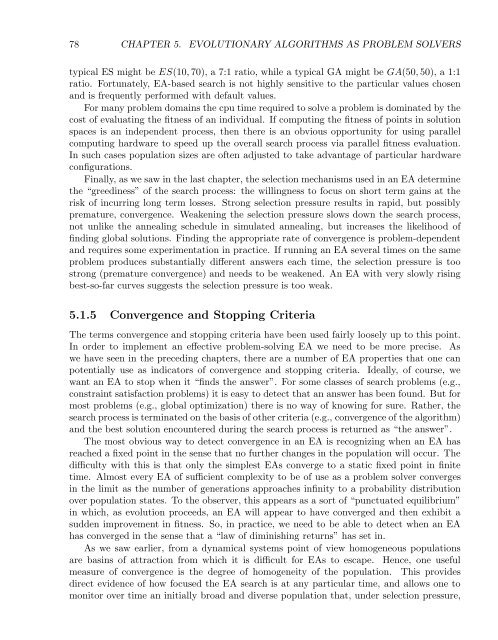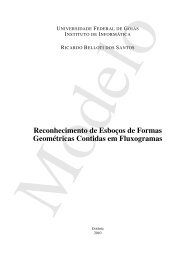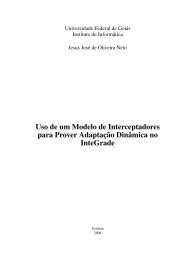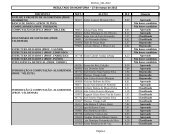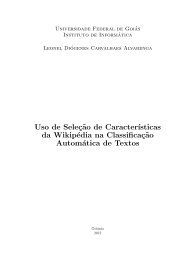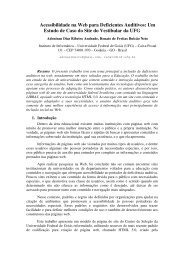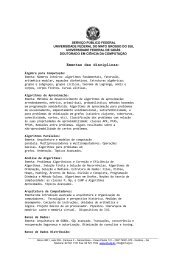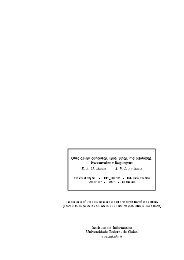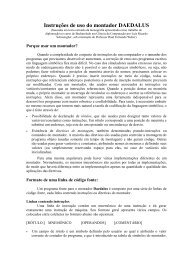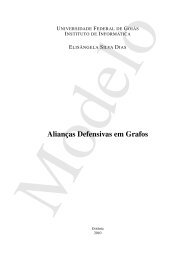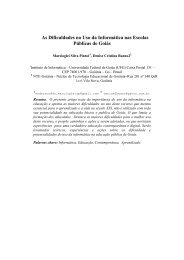Evolutionary Computation : A Unified Approach
Evolutionary Computation : A Unified Approach
Evolutionary Computation : A Unified Approach
You also want an ePaper? Increase the reach of your titles
YUMPU automatically turns print PDFs into web optimized ePapers that Google loves.
78 CHAPTER 5. EVOLUTIONARY ALGORITHMS AS PROBLEM SOLVERS<br />
typical ES might be ES(10, 70), a 7:1 ratio, while a typical GA might be GA(50, 50), a 1:1<br />
ratio. Fortunately, EA-based search is not highly sensitive to the particular values chosen<br />
and is frequently performed with default values.<br />
For many problem domains the cpu time required to solve a problem is dominated by the<br />
cost of evaluating the fitness of an individual. If computing the fitness of points in solution<br />
spaces is an independent process, then there is an obvious opportunity for using parallel<br />
computing hardware to speed up the overall search process via parallel fitness evaluation.<br />
In such cases population sizes are often adjusted to take advantage of particular hardware<br />
configurations.<br />
Finally, as we saw in the last chapter, the selection mechanisms used in an EA determine<br />
the “greediness” of the search process: the willingness to focus on short term gains at the<br />
risk of incurring long term losses. Strong selection pressure results in rapid, but possibly<br />
premature, convergence. Weakening the selection pressure slows down the search process,<br />
not unlike the annealing schedule in simulated annealing, but increases the likelihood of<br />
finding global solutions. Finding the appropriate rate of convergence is problem-dependent<br />
and requires some experimentation in practice. If running an EA several times on the same<br />
problem produces substantially different answers each time, the selection pressure is too<br />
strong (premature convergence) and needs to be weakened. An EA with very slowly rising<br />
best-so-far curves suggests the selection pressure is too weak.<br />
5.1.5 Convergence and Stopping Criteria<br />
The terms convergence and stopping criteria have been used fairly loosely up to this point.<br />
In order to implement an effective problem-solving EA we need to be more precise. As<br />
we have seen in the preceding chapters, there are a number of EA properties that one can<br />
potentially use as indicators of convergence and stopping criteria. Ideally, of course, we<br />
want an EA to stop when it “finds the answer”. For some classes of search problems (e.g.,<br />
constraint satisfaction problems) it is easy to detect that an answer has been found. But for<br />
most problems (e.g., global optimization) there is no way of knowing for sure. Rather, the<br />
search process is terminated on the basis of other criteria (e.g., convergence of the algorithm)<br />
and the best solution encountered during the search process is returned as “the answer”.<br />
The most obvious way to detect convergence in an EA is recognizing when an EA has<br />
reached a fixed point in the sense that no further changes in the population will occur. The<br />
difficulty with this is that only the simplest EAs converge to a static fixed point in finite<br />
time. Almost every EA of sufficient complexity to be of use as a problem solver converges<br />
in the limit as the number of generations approaches infinity to a probability distribution<br />
over population states. To the observer, this appears as a sort of “punctuated equilibrium”<br />
in which, as evolution proceeds, an EA will appear to have converged and then exhibit a<br />
sudden improvement in fitness. So, in practice, we need to be able to detect when an EA<br />
has converged in the sense that a “law of diminishing returns” has set in.<br />
As we saw earlier, from a dynamical systems point of view homogeneous populations<br />
are basins of attraction from which it is difficult for EAs to escape. Hence, one useful<br />
measure of convergence is the degree of homogeneity of the population. This provides<br />
direct evidence of how focused the EA search is at any particular time, and allows one to<br />
monitor over time an initially broad and diverse population that, under selection pressure,


